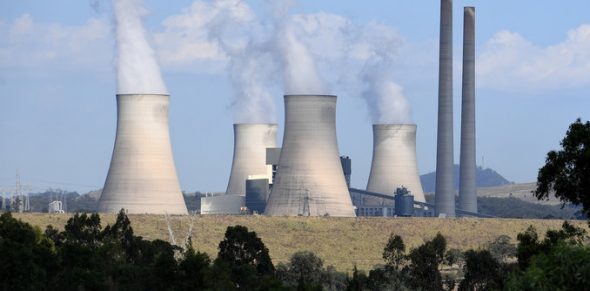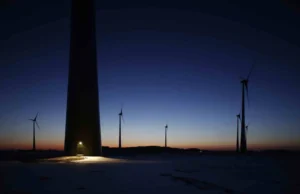A group of Australia’s biggest coal generators have roundly condemned proposed market rule changes favoured by federal energy minister Angus Taylor that are seen as an effective subsidy to ageing coal plants.
AGL Energy, the biggest coal generation company in Australia, Origin Energy, the owner of the biggest coal generator, and Queensland’s Stanwell Corp have joined the chorus of criticism over the proposed new market rules, describing it as flawed and not properly costed.
In its submission to the Energy Security Board’s draft, AGL says the most contentious element of those plans – a physical retailer reliability option (RRO) – has a “fundamental flaw”, because it would protect existing generation but give no signal to new investment or new technologies.
“We do not consider that a sufficiently strong case has been made to rapidly progress either the proposed changes to the RRO or to development a market for physical generation certificates,” AGL writes in its submission.
“Modifications to the design may not be able to overcome this fundamental flaw.” AGL owns the Loy Yang A brown coal generator in Victoria, as well as the Bayswater and the soon to be closed Liddel coal generators in NSW.
Origin Energy, which owns the 2.8GW Eraring coal generator in NSW, the biggest in the country, agreed with AGL. “Origin is unconvinced the modified RRO options proposed can help bolster new investment,” it says.
The Queensland based Stanwell Corp, owner of the Tarong and Stanwell coal generators, said it would be a “massive” and potentially costly change to the market and its systems.
“The complexity of such a change cannot be understated,” it writes. “Such a fundamental change to the market would likely take years to develop and implement at a significant cost to both market participants and AEMO.” Sister company CS Energy agreed a PRRO would most likely not encourage new investment.
The proposal for a physical RRO had already proven controversial, overshadowing a proposed rewrite of the electricity market rules that are considered out of date and not “fit for purpose” with new technologies.
The ESB has insisted that the PRRO is but an option among many, but it has been enthusiastically endorsed by Taylor as essential to maintain reliability and to keep costs down. Most in the market say the opposite will be true.
Battery storage and renewable energy companies strongly object to the PRRO, but even some coal generator owners such as Alinta, and now AGL, Origin and Stanwell, say that it is poorly designed and may increase the cost of the transition to renewables.
Some criticise the proposal because they say it may not even guarantee generation is available when needed, even if it is paid to be there, and would reduce grid reliability rather than increase it.
The most successful renewable energy and battery storage developer in Australia, the French-based Neoen, has suggested that the market redesign has been so badly thought through it should be ditched altogether.
Enel X, the demand management arm of international energy giant Enel, said many of the proposals had not been properly assessed and the Physical RRO appeared to only benefit coal generators.
“The physical RRO appears to be a heavy handed, costly and administratively complex instrument to deal with a transitional problem that may not even arise,” Enel X writes. “We do not believe that the ESB has fully explored all other options, particularly options that do not involve amendments to the RRO.”
The only coal generators wholeheartedly supporting the idea of the PRRO are EnergyAustralia, which insiders say played a key role in designing the proposal and which appeared to take ownership of the idea in its submission, and Trevor St Baker’s Delta Electricity, which operates the Vales Point coal generator in NSW.
“We propose a physical retailer reliability obligation (PRRO) which will help to physically stabilise the power system and keep it reliable and affordable for consumers as we bring forward new renewable and other capacity investment,” EnergyAustralia, which owns the Yallourn and Mt Piper coal generators, wrote in its submission.
Delta supported the PRRO,a although it admitted it could result in surplus capacity which “will unnecessarily increase electricity prices to consumers.”
St Baker, writing in a separate submission on behalf of his innovation fund, said he supports the PRRO, but notes that while a “properly structured Physical RRO could be a positive step”, it may take years to develop, and won’t help the present operational needs of the power system.
St Baker argued that “traditional (thermal) Synchronous Generators” must continue to play a critical role in delivering a “safe, secure, reliable and affordable electricity system”.
Needless to say, battery storage and electric vehicle maker Tesla disagreed with that idea. “There is no need for synchronous assets to achieve a low-cost, reliable, secure and zero emission grid,” Tesla writes in its submission.
See our separate story: No need for synchronous assets in zero emissions grid, says Tesla
To be sure, the big coal generators agree with the idea that there should be some mechanism to support “disptachable capacity”, but most argue that this should be focused on “flexibility”, and the ability to respond to varying situations, rather than the simple equation of aggregate capacity.
Many of these coal companies, such as AGL and Origin, plan large battery storage investments to partially replace the coal generators they intend to close over the next decade or so. So a mechanism that supports flexibility rather than outright capacity is favoured.
Even the government’ owned generator Snowy Hydro agrees with that notion. “Capacity mechanisms like the Physical RRO are inefficient, secondary solutions,” it writes, adding that it won’t even address capacity shortfalls. “It will simply increase costs for participants and, ultimately, consumers.”
The ESB is supposed to delivering its final proposals for the post 2025 market redesign next month, but many wonder how it can given that many of its suggestions, including the PRRO, but also the issue of grid congestion, managing distributed energy resources and renewable energy zones, are short on detail.
See also: Industry slams Taylor’s favoured coal subsidy in response to ESB market options
And: “Not worth the harm”: Neoen says ESB reforms should be abandoned










